Critical Swim Speed (CSS) is also commonly known as lactate threshold or anaerobic threshold and is a good indicator of your current level of endurance or aerobic capacity. Depending on your level, it is also a good indicator of your 1500 meters or 1650 yards race pace. CSS is usually measured per 100 m/yd.
Training at CSS pace regularly, with a correct technique is important to develop your endurance.
CSS is an alternative and easy way to understand and build endurance paces into your training routine. Knowing your CSS provides better training accuracy and specificity.
It is a great tool to determine your swim sets intervals (when to start each repetition), develop your pace awareness and adjust the intensity of your swim sets.
Example:
If your CSS pace per 100 is 1 minute and 50 seconds (1’50), then a swim set at CSS pace could be: 8 x 100 on 2’00 at CSS pace.
This means you start each 100 repetition every 2 minutes with the goal of swimming each repetition at the pace of 1 minute and 50 seconds.
How to find out your CSS
A CSS swim test requires two time trials swum one after the other: a 400 m/yd and a 200 m/yd.
Enter both times into the calculator on the Outpace website.
The result will show your CSS time in minute(s) and seconds per 100 m/yd.
The test result will then determine your Outpace level and guide you through appropriate workout plans with targeted repetition start times (send-off) , intensity of your swim sets and target pacing for your training.
The main advantage of this test is that you can do it yourself in your own time, using a pace clock or your watch.
Results interpretation
The CSS calculation looks at the difference between the two swim time results. Provided you are fit enough to do the test and are well rested for each time trial, the 200 swim should be at a faster average pace than the 400 swim.
For example, if your 400 time is 6 minutes (6’00), then your 200 time should be faster than 3 minutes (3’00).
The calculation looks at the time difference between the 400 and 200 times.
Having a smaller time difference gives an indication that you are more aerobically conditioned than someone who has a larger difference in pace.
For example, if your 400 time is 6 minutes and your 200 time is 2 minutes and 50 seconds, the 200 time difference is 3 minutes and 10 seconds per 200 or 1 minute and 35 seconds per 100.
This result should give us a good indication of your critical swim speed which is the pace that you should be able to sustain for approximately 1500 m or 1650 yd or longer depending on your fitness level.
Because the difference between the 400 and 200 times are being taken into account, sometimes a swimmer who has faster overall results can have a lower CSS speed (see the example below). This would show the swimmer needs to spend time working on their endurance so they can develop more consistency in their pace.
Example of how different 200 times can effect overall CSS results:
- If 400 time is 6’00 and 200 time is 2’45 then CSS would be 1’38 per 100 m/yd
- If 400 time is 6’00 and 200 time is 2’50 then CSS would be 1’35 per 100 m/yd
- If 400 time is 6’00 and 200 time is 2’55 then CSS would be 1’33 per 100 m/yd
- If 400 time is 6’00 and 200 time is 2’59 then CSS would be 1’31 per 100 m/yd
In order to get the most accurate CSS result, swimmers MUST make every effort to do their best time on the day for the 400 and the 200 swim through best effort and good pacing.
Various factors can influence the result such as:
- Testing was on an “off day” (tired, poor nutrition, stressed, etc.),
- Started too fast and “hit the wall” or started too slow,
- Not being fit enough to recover between the two tests,
- Deliberately swimming a slow 200 to get a better score.
The above factors may result in a faster CSS time, but not an accurate one. An unrealistic CSS time will see you either struggle in the sets prescribed or end up training in a much higher anaerobic zone which will not help improve your aerobic capacity.
On the other hand, if you haven’t swum the time trials to your best potential, your CSS sets would not be challenging enough.
This is why it is recommended to do the swim test periodically. That way, you will learn to pace yourself better as well as improve your fitness through the season.
A good way to check if the CSS result reflects your current level is to do a 8 to 10 x 100 Freestyle at CSS pace with about 10 seconds rest between the repetitions (refer to the example at the beginning of this article).
If you can maintain this pace throughout and providing that it is challenging enough, then you are at the right level.
How to improve your endurance using CSS in your training
Swimming at CSS is very demanding physically, physiologically, technically and psychologically, in that you have to stay permanently focused on maintaining a good technique throughout the set.
Make sure that you have previously developed a strong endurance (aerobic) base before you train at CSS.
To improve CSS, you must practice interval training sets at CSS or near that pace regularly.
CSS sets can be practiced every day as long as you alternate Freestyle sets with other strokes to allow a better recovery of the specific muscle fibers within the same muscle.
The key of CSS training is that the quality of your technique and the pace of the last repetitions remains as good as the first few repetitions. If you go too hard in the first few repetitions, you will have to recover for longer than you should, or the speed of the other repetitions won’t be as good. The key is to maintain a constant speed throughout the whole set and perhaps accelerate through the last repetition if you can!
For swimmers and triathletes, interval training sets at CSS is the answer to improving your speed over longer distances.
Swimming at faster paces is also beneficial as long as you keep the distances short. Sprints train your nervous system / muscle fibers to generate more force and speed.
Varying distances and intensities during the season is also important in order to maintain and develop the main physiological and technical qualities.
Based on your CSS, the Outpace swim workouts have been specifically designed to meet your individual training needs and keep you fit all year round.

